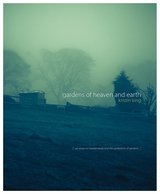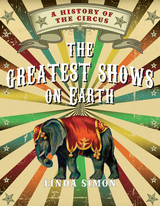3 start with G start with G

Gardens of Heaven and Earth is a lyrical study that investigates the nature of experience, the limitations of language and ideas of the garden as both a relationship to be experienced and as a symbolic language to be read. Discussing gardens in relation to the life and writings of Emanuel Swedenborg, this short work brings a fresh perspective to the roles that gardens have played in delighting and sustaining the human condition throughout the ages.
This volume is augmented by three black-and white-illustrations and also contains a chronology of Swedenborg’s life and works, an inventory of Swedenborg’s own garden in Stockholm, a bibliography, and an index.

While fighting a war for the Union, the Republican party attempted to construct the world’s most powerful and most socially advanced nation. Rejecting the common assumption that wartime domestic legislation was a series of piecemeal reactions to wartime necessities, Heather Cox Richardson argues that party members systematically engineered pathbreaking laws to promote their distinctive theory of political economy.
Republicans were a dynamic, progressive party, the author shows, that championed a specific type of economic growth. They floated billions of dollars in bonds, developed a national currency and banking system, imposed income taxes and high tariffs, passed homestead legislation, launched the Union Pacific railroad, and eventually called for the end of slavery. Their aim was to encourage the economic success of individual Americans and to create a millennium for American farmers, laborers, and small capitalists.
However, Richardson demonstrates, while Republicans were trying to construct a nation of prosperous individuals, they were laying the foundation for rapid industrial expansion, corporate corruption, and popular protest. They created a newly active national government that they determined to use only to promote unregulated economic development. Unwittingly, they ushered in the Gilded Age.

“Step right up!” and buy a ticket to the Greatest Show on Earth—the Big Top, containing death-defying stunts, dancing bears, roaring tigers, and trumpeting elephants. The circus has always been home to the dazzling and the exotic, the improbable and the impossible—a place of myth and romance, of reinvention, rebirth, second acts, and new identities. Asking why we long to soar on flying trapezes, ride bareback on spangled horses, and parade through the streets in costumes of glitter and gold, this captivating book illuminates the history of the circus and the claim it has on the imaginations of artists, writers, and people around the world.
Traveling back to the circus’s early days, Linda Simon takes us to eighteenth-century hippodromes in Great Britain and intimate one-ring circuses in nineteenth-century Paris, where Toulouse-Lautrec and Picasso became enchanted with aerialists and clowns. She introduces us to P. T. Barnum, James Bailey, and the enterprising Ringling Brothers and reveals how they created the golden age of American circuses. Moving forward to the whimsical Circus Oz in Australia and to New York City’s Big Apple Circus and the grand spectacle of Cirque du Soleil, she shows how the circus has transformed in recent years. At the center of the story are the people—trick riders and tightrope walkers, sword swallowers and animal trainers, contortionists and clowns—that created the sensational, raucous, and sometimes titillating world of the circus.
READERS
Browse our collection.
PUBLISHERS
See BiblioVault's publisher services.
STUDENT SERVICES
Files for college accessibility offices.
UChicago Accessibility Resources
home | accessibility | search | about | contact us
BiblioVault ® 2001 - 2024
The University of Chicago Press









